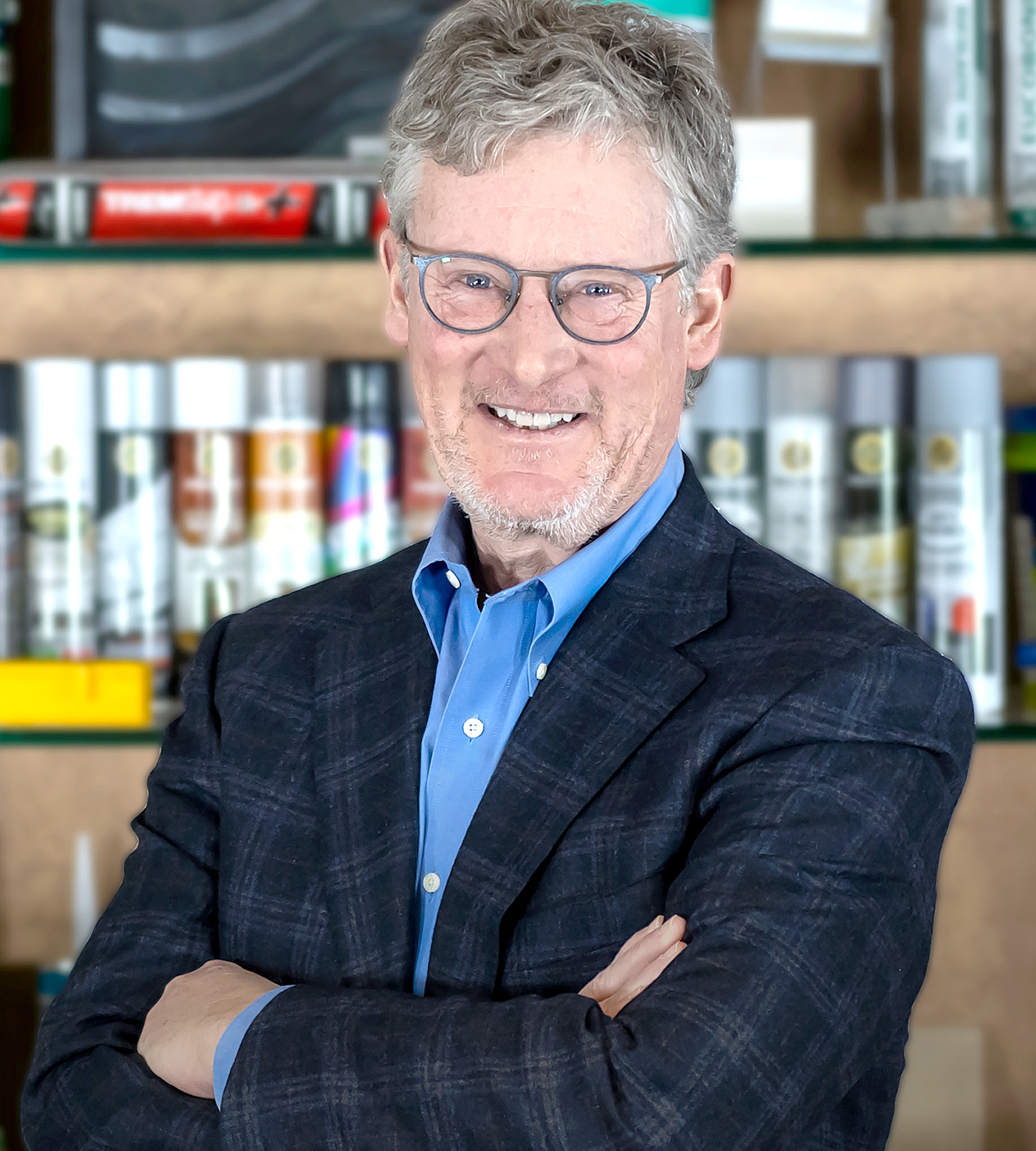Language
You can read the magazine in one of the following languages
There’s a lucky number in the Sullivan family, but it’s not one many would guess first go: 168. “It was my grandfather’s favourite number. It was the licence plate on his car,” Frank Sullivan explains. “My father Tom then used it on his licence plate and it’s now on mine.” And there’s a distinct reason why, for this business-minded family, this number has so much meaning. “It’s the number of hours in the week,” he says.
In 1947, Frank’s grandfather, who was also named Frank Sullivan, founded Republic Powdered Metals on the back of one product, an aluminium roof coating called Alumanation. After his death in 1971, the company passed into the hands of his son Tom who would remain Chairman and CEO of RPM International, as the company is now known, for three decades, working alongside President and COO Jim Karman. Frank succeeded his father in 2002 as President and CEO of a family business that has become a global leader in specialty coatings, sealants and building materials. Since 2008, Frank has held the Chairman and CEO titles.
“A new CEO will show up on a five-year run and become motivated by how much money they can make in that time. But people can smell that. They want to be part of building something great.”
Much has changed since the early days – the company is now publicly listed on the New York Stock Exchange, for one – but Frank says the words of his grandfather still ring true. “He would tell his associates that we have two great gifts: life and the time to do something with it,” he shares. “And that there’s an obligation to put the 168 hours a week to good use at work or at home because once the week is over, you’ll never get them back.”
Today, his grandfather’s philosophy permeates the company culture to the extent that it has become an official code of conduct that demonstrates its commitment to doing business the right way for the right reasons. “We’ve captured it into what we call The Values & Expectations of 168,” he says. “It focuses on operating with transparency, trust and respect, and values the worth of individuals and their contributions to the combined success.”
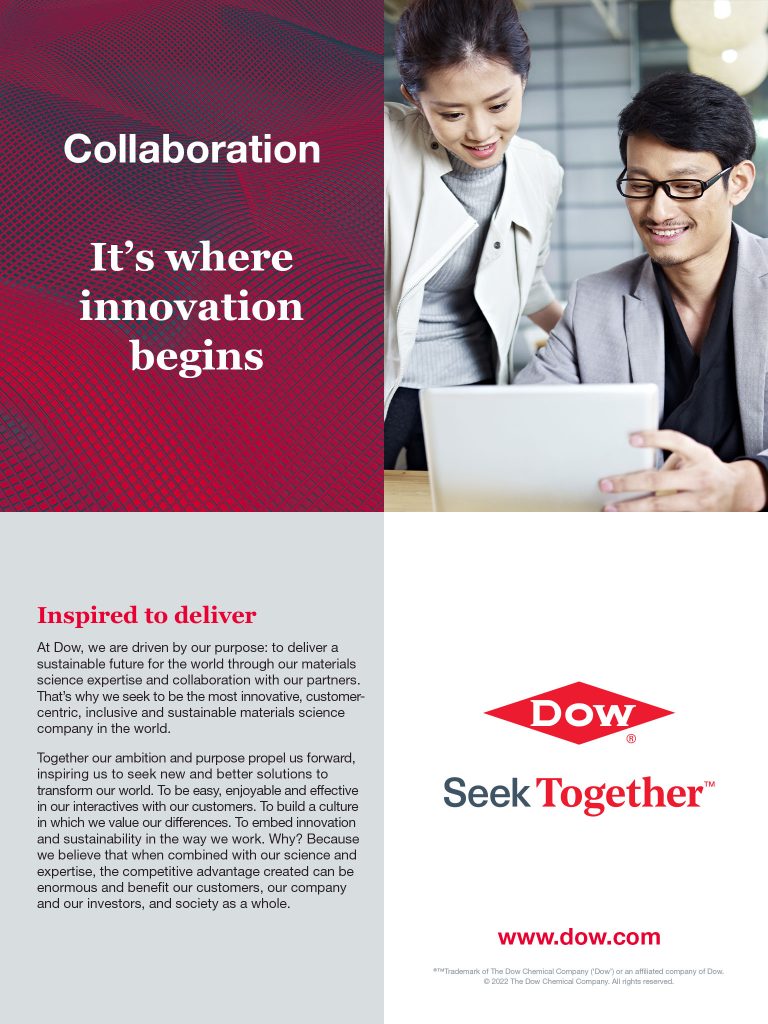
As a teenager, Frank was by his father’s side as, under Tom’s leadership, the company grew from a US$11 million to a US$2 billion business. “From the age of 13, I worked every summer at RPM.” His name didn’t guarantee an easy passage, however. “Friends and family were welcome to join, as long as they would work twice as hard for half as much,” he smiles.
Around the time of his 18th birthday, Frank discovered he was making minimum wage of US$2.50, while other seasonal part-time associates were earning two dollars more. “When I challenged my father, he asked me whether I was interested in making money or learning the business,” he says. “At that age, the answer to that question was very simple. My father told me I was focusing on the wrong things.”
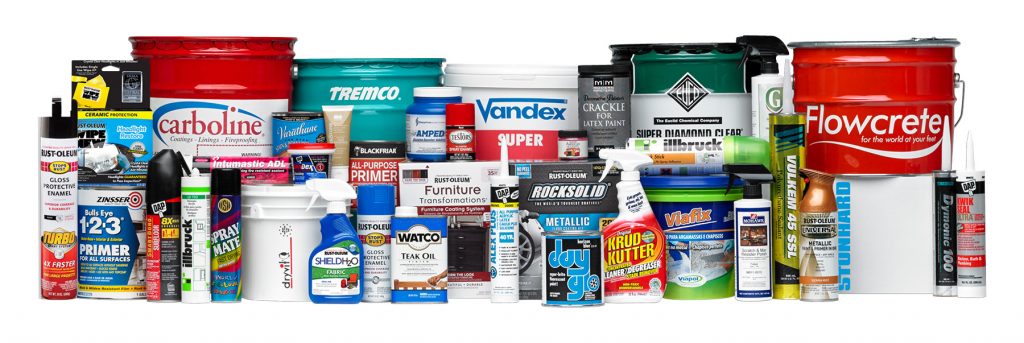
After graduating from the University of North Carolina at Chapel Hill in 1983, Frank gravitated towards the banking business, bringing this external experience back to RPM four years later. And he believes that a large proportion of the company’s success is “continuity – continuity in leadership over time and continuity of vision.
“Part of the contrast I feel compared to CEOs of many other public companies is this continuity,” he says. In a world as fast-paced as ours, Frank thinks it is as critical today as it has ever been. “As everything around us is changing, those elements of continuity become increasingly important,” he says.
In essence, it’s a stewardship that has been passed through the generations. “We have all seen it as our duty to serve our associates, customers and shareholders equally,” Frank explains. And, just like his father asked him all those years ago, he finally appreciates that the desire to build something great over earning money is what differentiates successful leaders from failed leaders. “You see it in businesses that churn through leadership. A new CEO will show up on a five-year run and become motivated by how much money they can make in that time. But people can smell that. They want to be part of building something great.”
As Frank has built upon the legacy of his father and grandfather, he has shown the rewards that can be reaped from putting long-term success over short-term profit. The company has pursued under his leadership a five-pillar growth strategy centred upon product innovations, geographic expansions, operational excellence, connections creating value and strategic acquisitions: across the course of his tenure, RPM has completed more than 125 acquisitions of standalone businesses that complement its existing portfolio – 68 of these have been made in the last 10 years.
Restructuring made towards the end of his father’s time in the role provided a platform for Frank to build upon as he stepped into the C-suite. “In 2000, we reorganised from a holding company into six groups, which was very effective as it allowed us to take advantage of RPM companies and product lines that had previously operated independently,” he explains. The move also allowed the coordination of manufacturing, purchasing and delivery of its products and services with companies that served similar customers in similar markets.
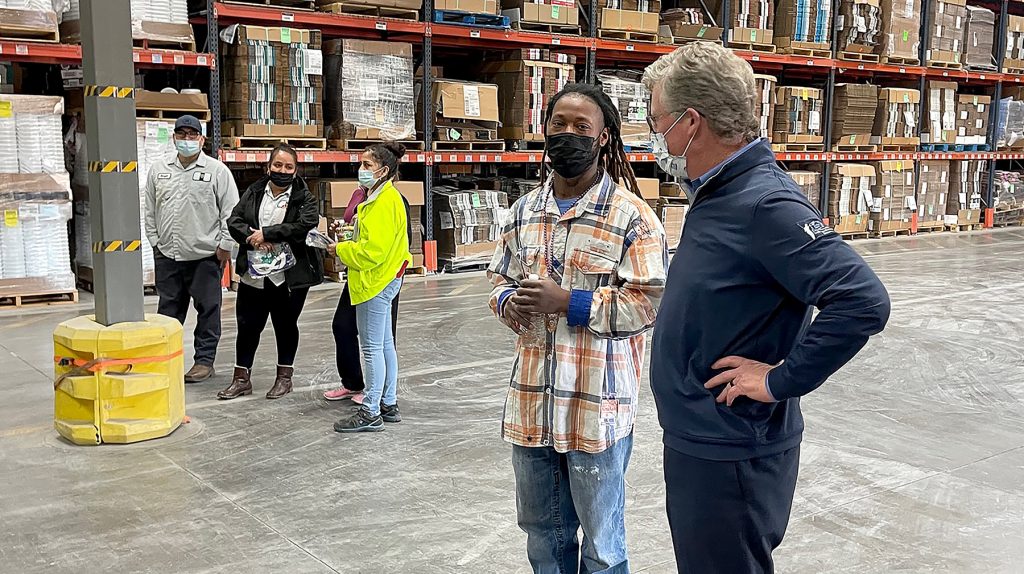
“How to manage the desire for short-term gains and performance versus long-term sustainability is the toughest and most enduring question for any business person or CEO. It always has been and still is.”
He says that served the business well for 15 years. “After that, our ability to continue to create value started to wane,” he admits. In 2018, a new strategy was announced, called MAP to Growth. The sense of urgency to execute the MAP to Growth program accelerated when the activist investor, Elliott Management, showed up as an RPM shareholder.
While lean manufacturing disciplines were not new to the manufacturing world, they were relatively new to RPM. “In our decentralised structure, we had 155 plants that basically operated on their own,” he says.
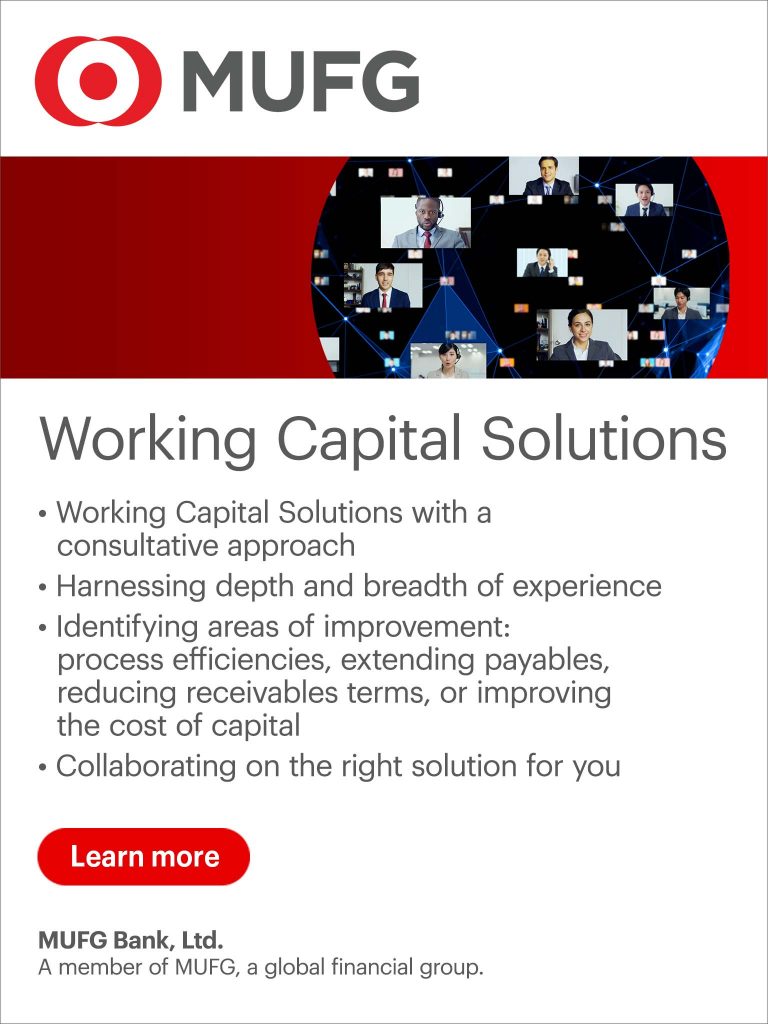
By “taking a hard look at all the things that customers really don’t care about,” the MAP to Growth strategy came to a successful completion in May 2021. The six business groups became four reportable segments: performance coatings, construction products, consumer and specialty products. “We didn’t take the factories – and their control – away from our businesses at a centralised level, instead we instituted a lean manufacturing approach on a consistent basis across all of our businesses.”
Some 28 factories were consolidated into other RPM facilities, reducing its global facilities to 122. This strategy allowed for consolidated material spending and improved payment terms. There were also obvious savings to be found in accounting and IT systems: 46 accounting locations were consolidated and three-quarters of the organisation migrated to one of four group-level ERP platforms.
“It’s been a marvellous success because a lot of our sharper operations people were eager for us to catch up with the rest of the world,” Frank says. “We’ve married our entrepreneurial approach to the way we deal with customers, products and operations with this consolidation and centralisation of key functions in manufacturing, supply chain, IT and administration to save costs and develop a higher level of sophistication and efficiency.” At the operating improvement program’s conclusion, the company reported US$320 million in annualised cost savings.
Frank’s five-pillar growth strategy has paid dividends and today RPM is a US$6.1 billion company with over 15,500 employees worldwide. Of its revised four key areas of operation, its consumer brands for both professionals and DIYers currently comprise 38 per cent of net sales, followed by construction brands (34%), performance coating brands (17%) and specialty brands for industrial, commercial and niche applications (11%).
While its footprint across the globe is at 160 countries and territories and growing, North America remains its major market, representing 75 per cent of sales, followed by Europe (17%), South America (4%), Asia–Pacific (3%) and Africa and the Middle East (1%). A follow-up strategy called MAP 2025 is being written to map out the path over the next three years.
Yet Frank knows that there’s a fine balance inherent to the role. “How to manage the desire for short-term gains and performance versus long-term sustainability is the toughest and most enduring question for any business person or CEO,” he says. “It always has been and still is.”
Managing RPM through “significant change and challenges” has been his greatest success, Frank says. A small product line that contained asbestos was discontinued in 1977. Between 2000–2010, the company paid out US$600 million in defence and settlement costs. “We then put together a team to craft a subsidiary bankruptcy process and ultimately funded a US$800 million trust fund to take care of people who claimed exposure to our product,” he says.
During the same decade, there was the global financial crisis to navigate. Most recently, he negotiated a settlement agreement with Elliott Management and, as the MAP to Growth strategy was being implemented, the COVID-19 pandemic swept across the globe.
“The pace of change, the level of big events that impact everybody or impact your business, isn’t going to stop. So you need to be resilient and that’s one of the things that typifies RPM.”
“There have been many times during my 18 years as CEO that, as we’ve got through a major challenge, some enterprise threatening, I’ve felt that the next phase would be a return to normal,” Frank says. But he has now come to the conclusion that we live in what he refers to as a “VUCA” (volatility, uncertainty, complexity and ambiguity) world.
“The pace of change, the level of big events that impact everybody or impact your business, isn’t going to stop. So you need to be resilient and that’s one of the things that typifies RPM. A resilient company is nothing more than a collection of resilient individuals who are all committed and who all believe. And the Value of 168© is the glue that holds the organisation together in the midst of change,” he continues.
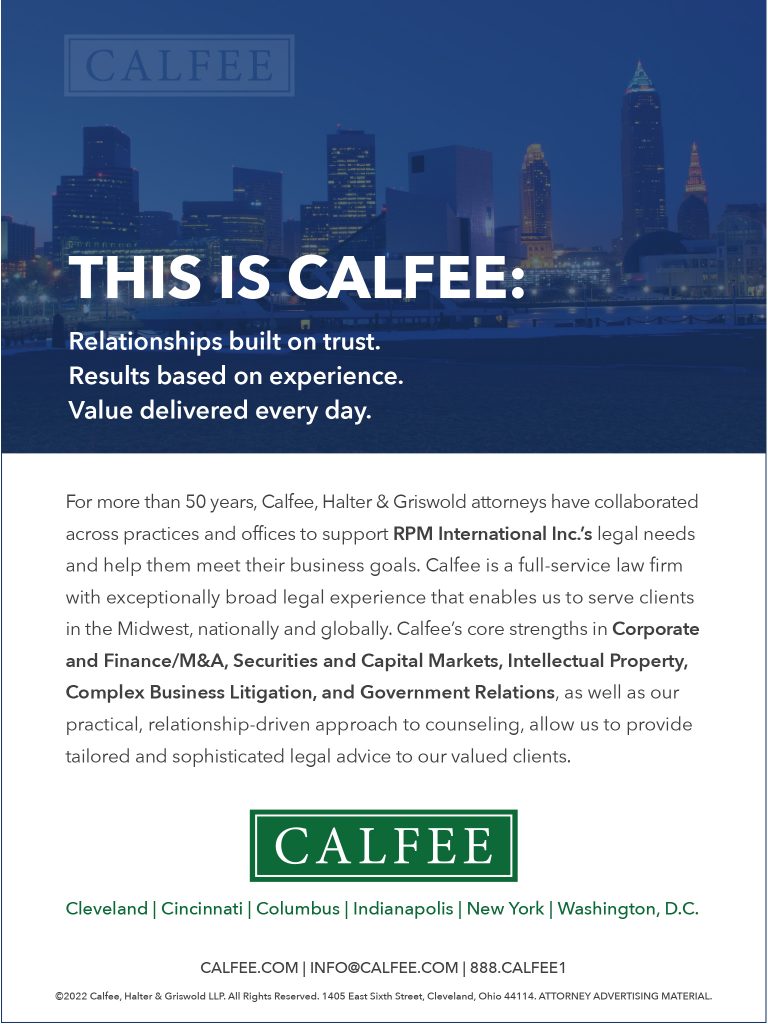
But there have been positives to come out of the COVID-19 pandemic. The lockdown-driven increase in DIY and home-improvement projects boosted sales, especially of its leading consumer brands such as Rust-Oleum, Varathane, DAP and Zinsser. The crisis also delivered a set of business lessons. “We ratcheted up our communications at the senior leader level, board level and across the organisation,” Frank says. “Compared to how we communicated in the past it was extraordinary.” COVID-19, he continues, forced a level of transparency that is here to stay in the company. “Instead of holding information about trends, cases and local sites, we shared information and best practices.”
Yet the company is still navigating many of the pandemic’s effects, particularly in the recruitment space. “We’ve always had a high level of remote work among our sales and technical service force around the globe. But other professional staff, marketing and communications, and accounting teams all come to an office and we work together,” Frank explains.
“Success lies in the spaces where the company delivers a value-added differentiated product or service. “We’re not organised to be the low-cost producer of a commodity. We know what we’re good at.”
Now, the question is how to please a workforce that has experienced remote working and likes it. “We’re trying to manage our way through it,” he explains. “The biggest element that I think we have yet to understand is what it means for onboarding people and developing younger people into leadership roles and seeing how they manage others. How do proven practices of in-person observation and development work on Teams or Zoom virtual meetings, for example,” he asks.
There’s also difficulty in finding entry-level workers – currently, Frank says RPM has between 300 and 400 open positions. To find a solution, the company is looking outside of the box to “tap previously ignored workforces,” he says. “We have some work-study programs in prison systems in multiple states,” he explains. “We have programs where incarcerated individuals are trained in roofing and construction and, upon release, we’ll guarantee them a job with full benefits.” Now in its fourth year, he says the program has already seen a lot of success.
The company is one of the few private sector businesses to still offer an active US pension plan. “We reward our associates with benefits that respect the value they create. We reward our leaders with a combination of cash and stock,” Frank says. Empowerment is another reward. “People are responsible for hiring and firing their associates, for pricing their products, for innovation, for technical and customer service.” Removing the hierarchy promotes agility. “It also represents the fact that local leaders know what they need to treat their workforce properly, they know the local customs and the benefits.”
With hindsight, Frank says that the timing of the MAP to Growth program was fortunate, especially in terms of its supplier relationships. “We effectively consolidated procurement and became a much more important customer to our major vendors,” he says. “We worked to develop relationships at the senior leader level, as well as the operational and tactical level.”
And now, faced with a supply chain crisis (the likes of which he says he has never seen before in his career) and a critical shortage of raw materials and packaging, the benefits are becoming clear. “Communications in the supply chain have become better to help us find short-term solutions for real shortages, even to the point of sometimes directing us to a competitor or another source.”
If Frank had to name his secret weapon in the job, he would name two: the entrepreneurial culture of RPM and its great leaders. But it’s a tactical focus on having leading brands that sets the company apart in the market. “The simplistic view of strategy is better, faster, cheaper or differentiated,” he says. Success lies in the spaces where the company delivers a value-added differentiated product or service. “We’re not organised to be the low-cost producer of a commodity,” he says. “We know what we’re good at.”

